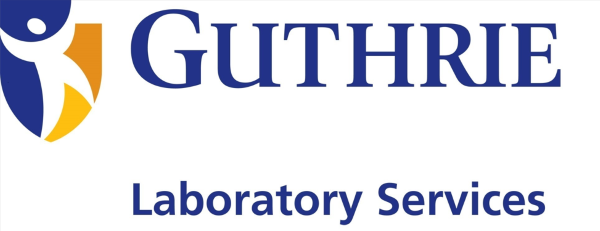| A B C D E F G H I J K L M N O P Q R S T U V W X Y Z # |
ANA Multiplex, Panel 1 with Reflexes
Test Code37521
CPT Codes
86038, 86235 (x5), 86255, 86431
Includes
ANA Screen, Immunoassay with Reflex to Titer and Pattern
Rheumatoid Factor
DNA (ds) Antibody, Crithidia IFA with Reflex to Titer
Sm Antibody
Sm/RNP Antibody
Scleroderma Antibody (Scl-70)
Sjogren's Antibodies (SS-A, SS-B)
If the ANA Screen, Immunoassay is positive, then ANA titer and pattern will be performed at an additional charge (CPT code(s): 86039).
If the DNA (ds) Antibody Screen is positive, then DNA (ds) Antibody Titer will be performed at an additional charge (CPT code(s): 86256).
Rheumatoid Factor
DNA (ds) Antibody, Crithidia IFA with Reflex to Titer
Sm Antibody
Sm/RNP Antibody
Scleroderma Antibody (Scl-70)
Sjogren's Antibodies (SS-A, SS-B)
If the ANA Screen, Immunoassay is positive, then ANA titer and pattern will be performed at an additional charge (CPT code(s): 86039).
If the DNA (ds) Antibody Screen is positive, then DNA (ds) Antibody Titer will be performed at an additional charge (CPT code(s): 86256).
Preferred Specimen
3 mL serum
Patient Preparation
Overnight fasting is preferred
Minimum Volume
1.5 mL
Transport Container
Transport tube
Transport Temperature
Room temperature
Specimen Stability
Room temperature: 4 days
Refrigerated: 7 days
Frozen: 30 days
Refrigerated: 7 days
Frozen: 30 days
Reject Criteria (Eg, hemolysis? Lipemia? Thaw/Other?)
Gross hemolysis • Grossly lipemic
Methodology
See individual tests
Reference Range
See Laboratory Report
Clinical Significance
This panel can be helpful in the diagnosis of autoimmune rheumatic diseases, including systemic lupus erythematosus, systemic sclerosis, Sjogren syndrome, mixed connective tissue disease, and rheumatoid arthritis. All specimens are screened for antinuclear antibodies (ANAs) with multiplex immunoassay. This approach simultaneously detects antibodies to dsDNA, chromatin, ribosomal protein, SSA, SSB, Smith (Sm), Sm/RNP, RNP, Scl-70, Jo-1, and centromere B. A positive result indicates the presence of at least 1 of these antibodies; a negative result indicates that none of the component antibodies were detected. Regardless of the result, this panel also detects antibodies to dsDNA, Sm, Sm/RNP, Scl-70, SSA and SSB as well as rheumatoid factor.
ANA immunofluorescence assay (IFA) on HEp-2 cells is considered by the American College of Rheumatology as the current gold standard for ANA screening because of its overall high sensitivity for several autoimmune diseases [1]. However, because patients with other diseases and healthy individuals may be positive for ANA IFA, using immunoassays for screening may be more specific for a systemic rheumatic disorder [2]. On the other hand, multiplex immunoassay screening cannot rule out autoimmune diseases characterized by other antibodies, such as autoimmune hepatitis and primary biliary cholangitis, which may be positive for ANA IFA.
The results of this test should be interpreted in the context of pertinent clinical and family history and physical examination findings.
References
1. Methodology of testing for antinuclear antibodies (position statement). 2009. American College of Rheumatology. Updated December 2019. Accessed May 15, 2023. https://assets.contentstack.io/v3/assets/bltee37abb6b278ab2c/blta48818378bc89445/acr-position-statement-methodology-testing-antinuclear-antibodies.pdf
2. Fritzler MJ, et al. J Appl Lab Med. 2022;7:357-361.
ANA immunofluorescence assay (IFA) on HEp-2 cells is considered by the American College of Rheumatology as the current gold standard for ANA screening because of its overall high sensitivity for several autoimmune diseases [1]. However, because patients with other diseases and healthy individuals may be positive for ANA IFA, using immunoassays for screening may be more specific for a systemic rheumatic disorder [2]. On the other hand, multiplex immunoassay screening cannot rule out autoimmune diseases characterized by other antibodies, such as autoimmune hepatitis and primary biliary cholangitis, which may be positive for ANA IFA.
The results of this test should be interpreted in the context of pertinent clinical and family history and physical examination findings.
References
1. Methodology of testing for antinuclear antibodies (position statement). 2009. American College of Rheumatology. Updated December 2019. Accessed May 15, 2023. https://assets.contentstack.io/v3/assets/bltee37abb6b278ab2c/blta48818378bc89445/acr-position-statement-methodology-testing-antinuclear-antibodies.pdf
2. Fritzler MJ, et al. J Appl Lab Med. 2022;7:357-361.
Performing Laboratory
| Quest Diagnostics Nichols Institute-San Juan Capistrano, CA |
| 33608 Ortega Highway |
| San Juan Capistrano, CA 92675-2042 |

